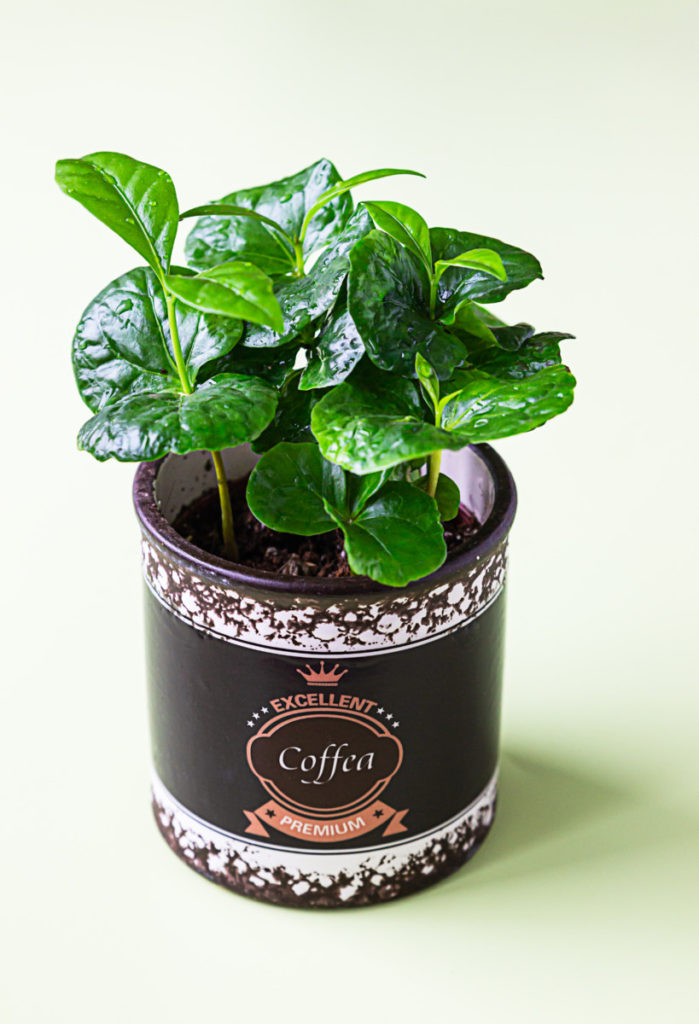
In recent years it has become popular to grow coffee plants indoors. They have a stunning shape and their glossy green leaves make them ideal houseplants.
While it is possible to get your tree to flower and produce berries indoors, it is unlikely and a long, tricky process. Typically, coffee grown indoors is all about the leaves. The flowers and fruit, if they do appear, are an added bonus.
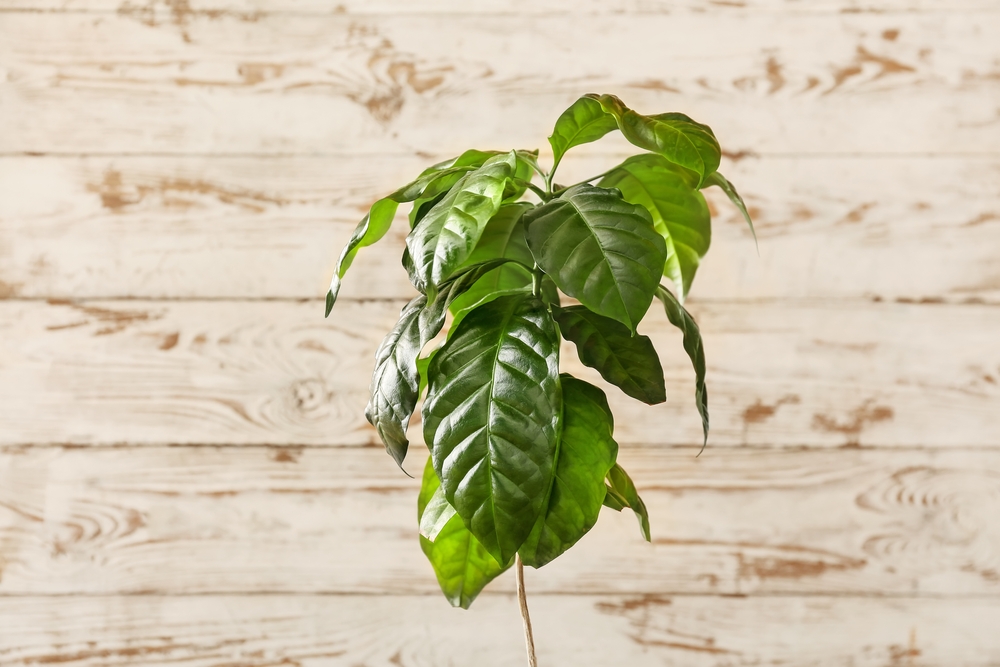
Growing from Seed
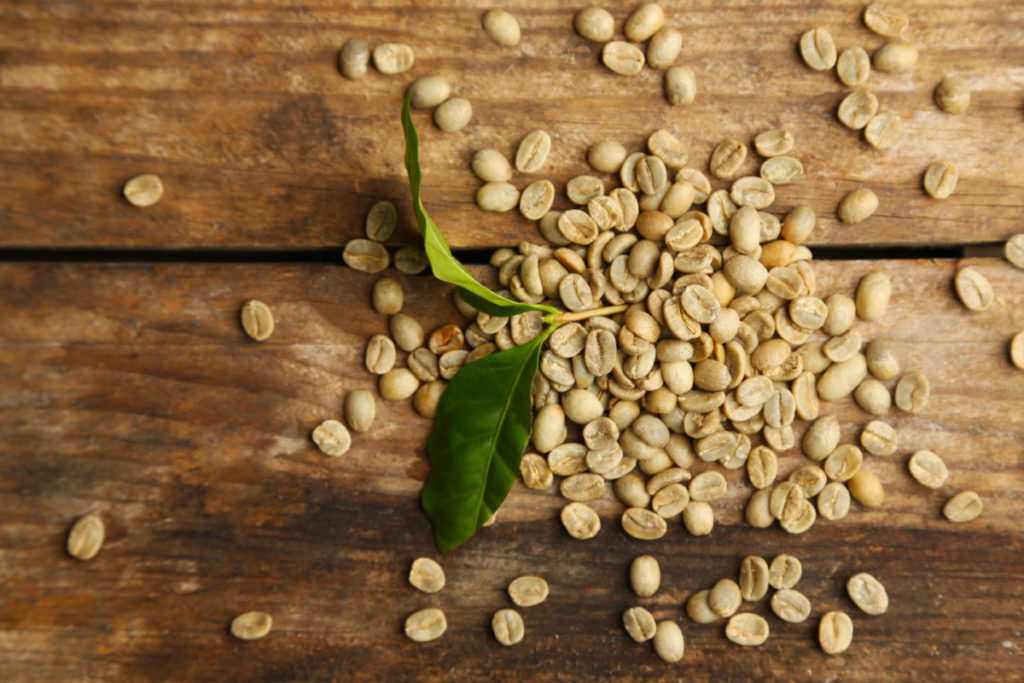
If the main goal with a coffee houseplant is purely the leaves, then try growing it from seed.
Take a green coffee bean, soak it for 24 hours, then sown the bean in damp germinating mix or sand. They should germinate within 2-4 months.
Once they have germinated, transplant into rich potting soil with added compost. Keep well-watered and feed often with liquid fertilizer.
You can purchase green coffee beans from many online home roasting websites, such as Happy Mug.
Propagate from Cuttings
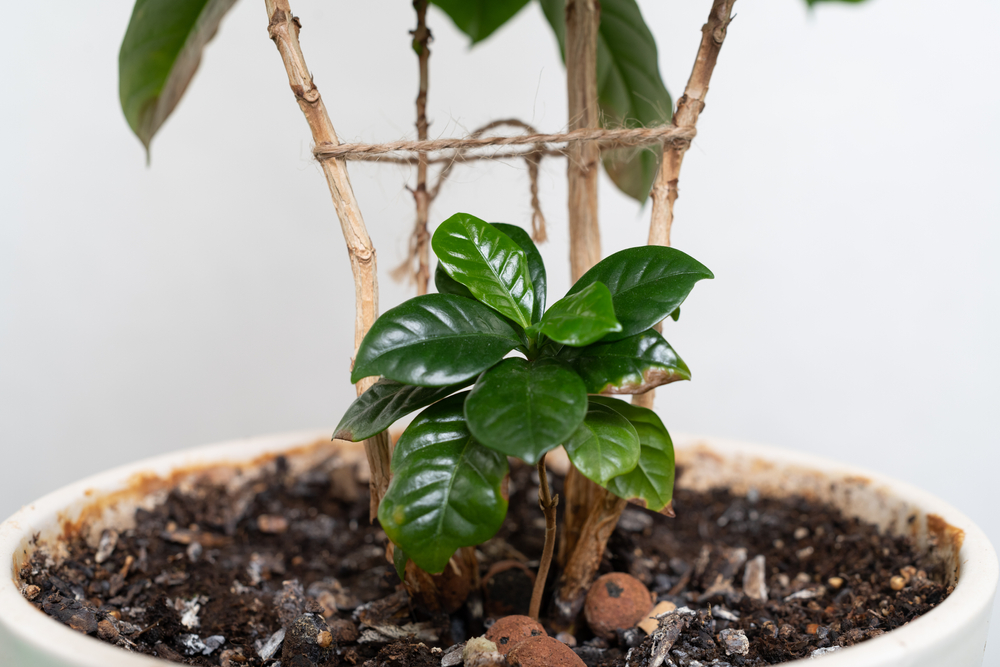
If you have access to a coffee plant, you can also propagate from cuttings.
Select healthy stems at least 8-10 inches long and remove all the leaves but the top two. Prepare a soil mix of equal parts coarse sand and coconut coir and dampen the mix before filling a pot.
Dip each cutting into water then into rooting hormone powder. Make a hole in the sand with a pencil or skewer and pop it in. Label and date so you can track their progress.
Cover with a plastic bag to form a mini greenhouse and check that they have enough water regularly. Test the cuttings by pulling gently. If they resist, roots have formed and they can be transplanted into individual pots.
Where To Buy A Coffee Plant
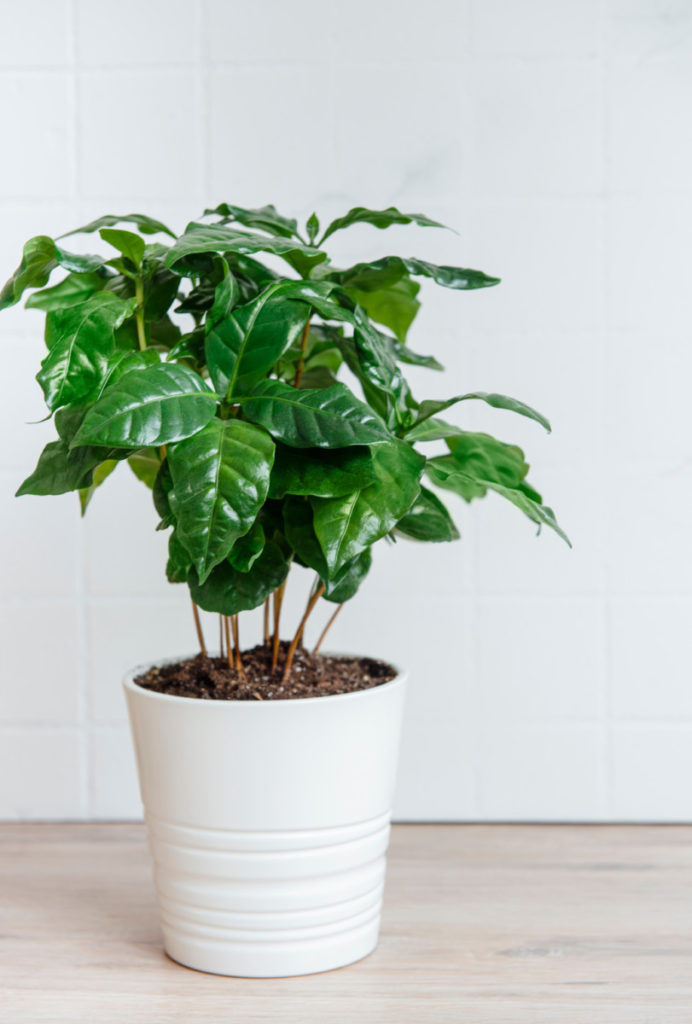
If starting from seed or propagating from cuttings seems like a lengthy process, you can of course buy mature coffee houseplants.
The Sill are one of the most reliable providers of high quality houseplants and they offer this delightful little coffee plant with a choice of stylish planters.
How To Care For Your Coffee Plant
Light
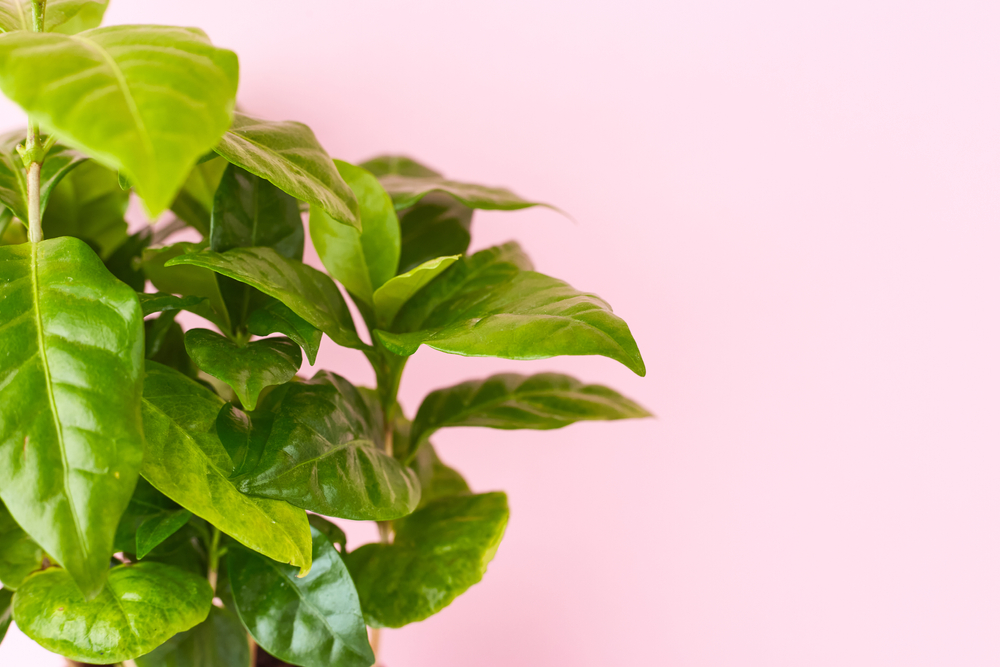
Coffee plants in their natural habitat are understory plants and do well in dappled light. This means that, like other tropical houseplants, they need a full day of bright indirect light.
An east-facing window with some direct morning sun is ideal. This will provide the best conditions for potential flowering. But, make sure you keep an eye on the leaves to stop them from burning.
Water
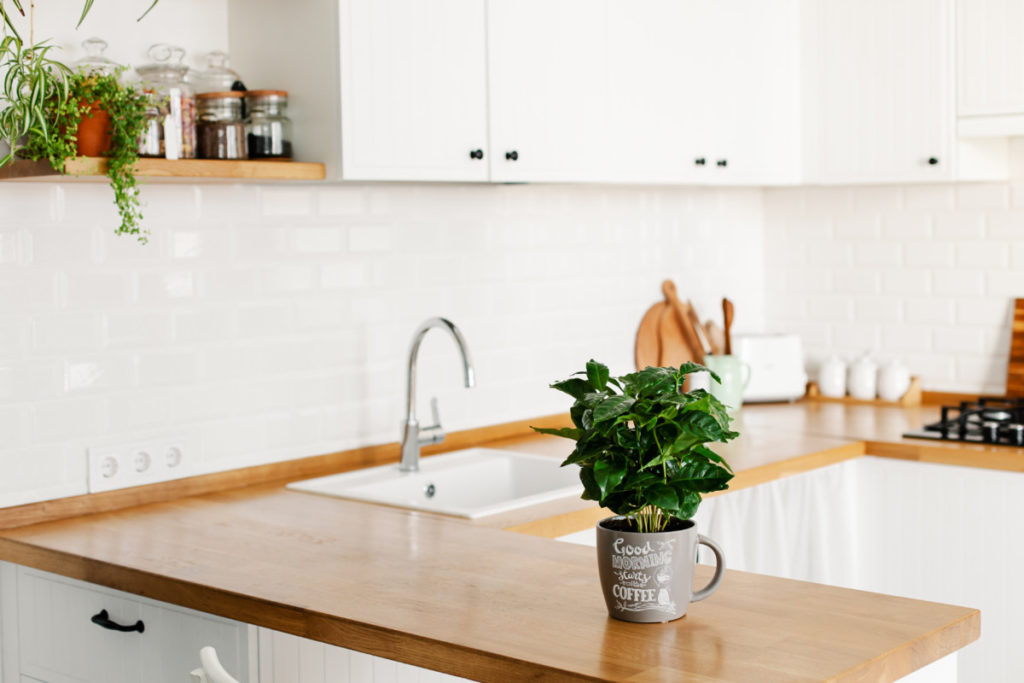
Coffee plants in containers should have excellent drainage to prevent root rot. Never leave them sitting in water (even in drip trays). Rather take them to a sink and allow them to drain thoroughly before putting them back on their trays.
Water thoroughly at least once a week, but keep an eye on them. These moisture lovers should not be allowed to dry out between watering. In periods of high heat, you may need to water more often.
Keep humidity high too. This will replicate the rainforest conditions these plants love, increasing your chances of flowering.
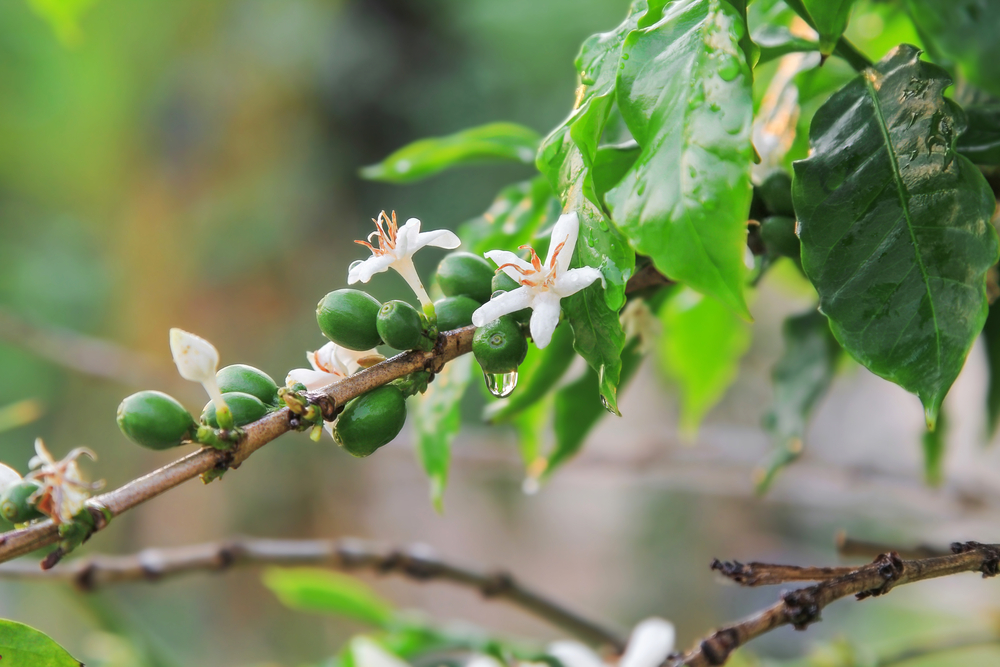
Soil
Container plants should be planted in an enriched potting soil mix. It’s best to make your own by combining three parts potting soil, one part compost, and some additional slow-release fertilizer.
Fertilizer
Feed coffee plants with a balanced liquid fertilizer every two weeks during the growing season and once a month during winter.
You can switch to a high phosphorus fertilizer if you want to encourage flowering. But, due to the conditions indoors, even this may not be enough to produce beans.
Maintenance
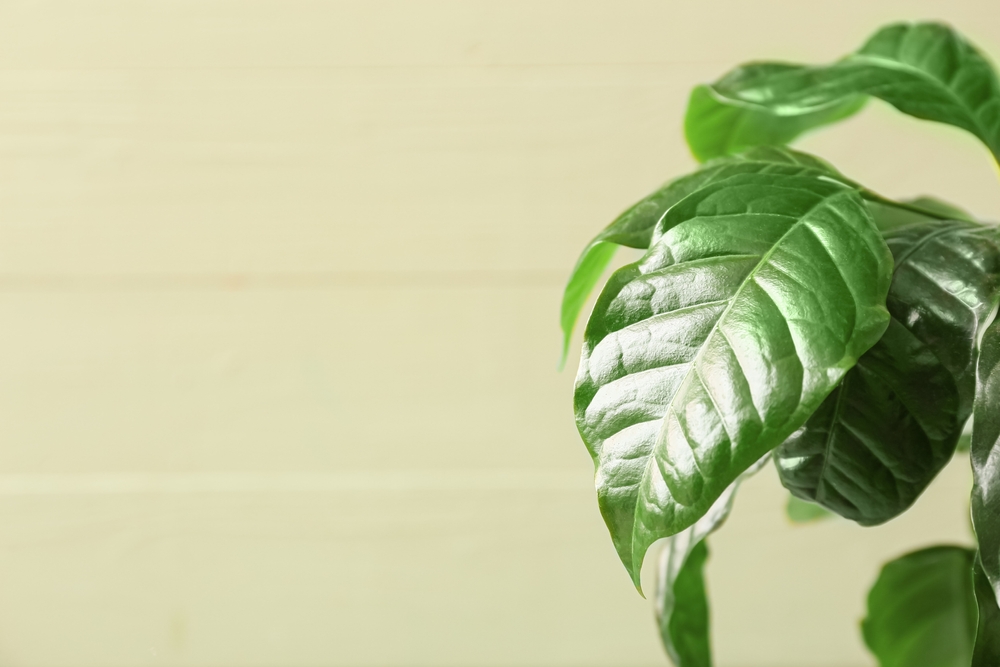
Pruning
Prune coffee plants in spring to keep their shape and stop the branches from becoming too dense. Good airflow and light are essential in keeping pests and diseases at bay.
Repotting
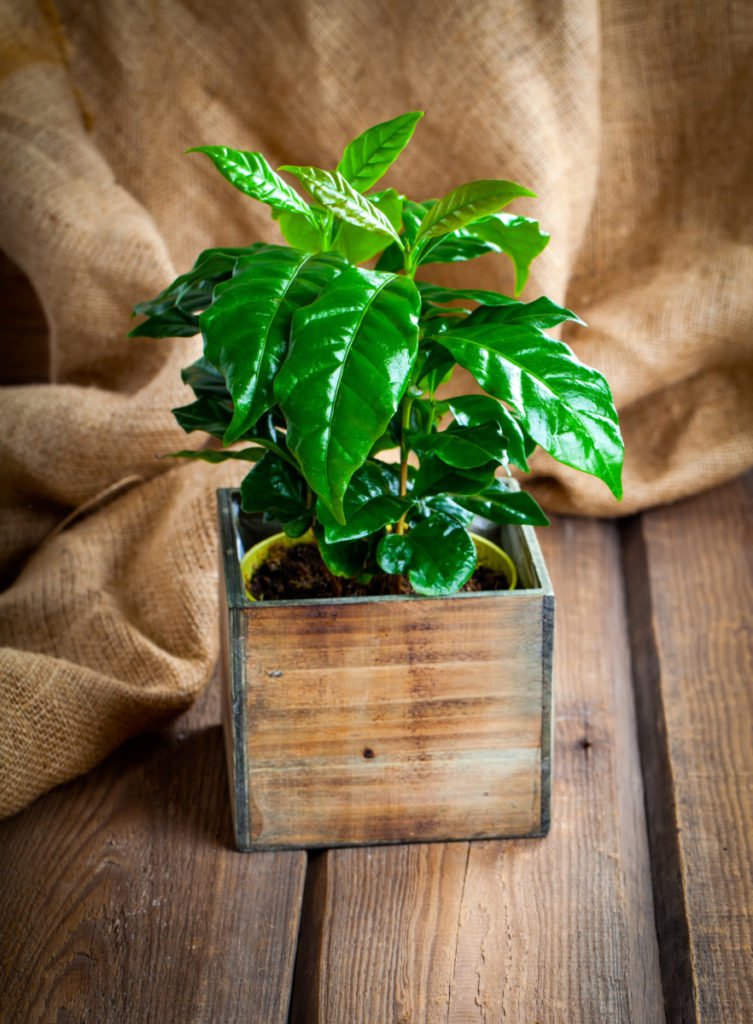
Indoor coffee plants need to be repotted every year to keep them in good health. These large shrubs need an increase in container size so they can grow larger.
If you prefer to restrict the size, you can prune it down and keep the same pot size. When repotting, prune the roots as well to keep them compact.
Related reading: 6 Signs Your Houseplants Need To Be Repotted & How To Do It
Pests & Diseases
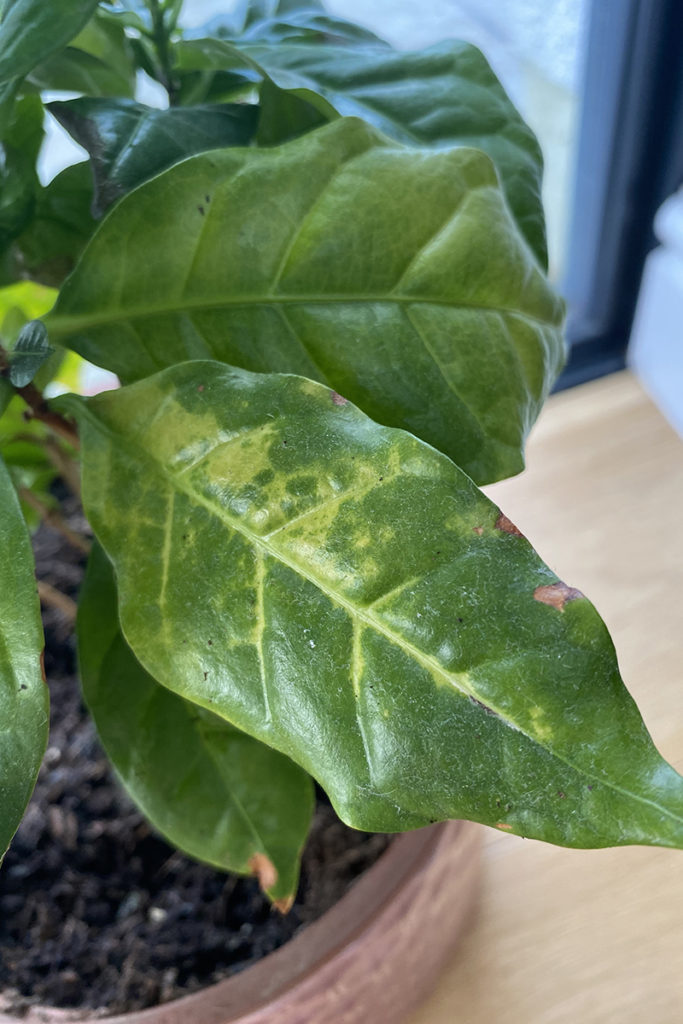
The caffeine in coffee plants is a natural repellent to pests and diseases. They also use their caffeine-rich fallen leaves to reduce the germination of other species around them, making them the dominant species.
This trait is also why many gardeners use spent coffee grounds as an insect repellent for their plants.
But while caffeine is helpful to coffee plants, it can still be attacked by certain pests.
Mealybug
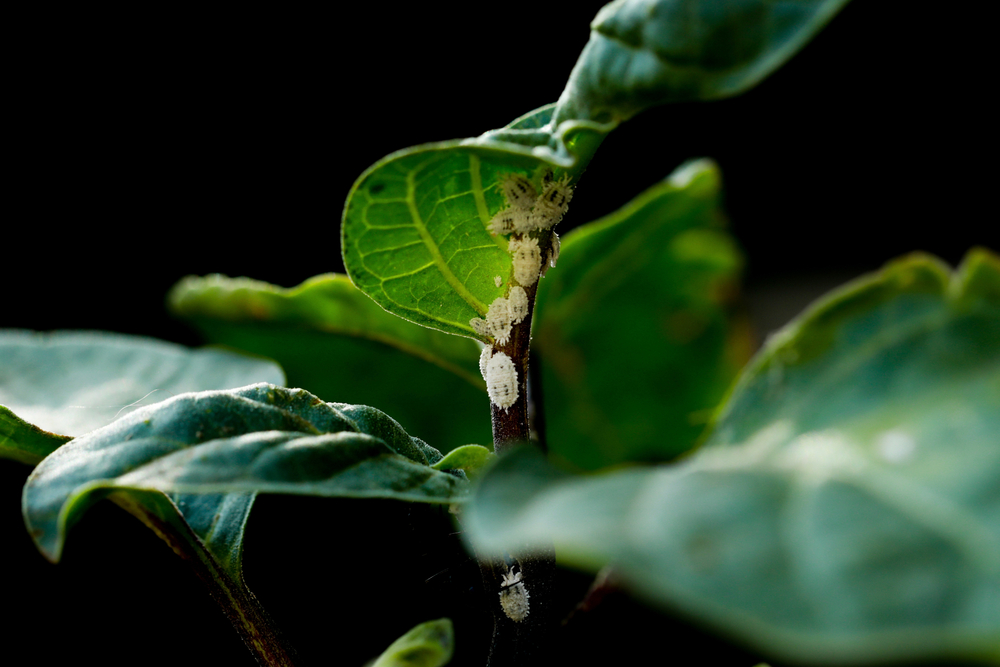
Sap-sucking mealybugs produce a powdery white substance that looks like white cotton. They are most prevalent in warmer climates and prefer sucking new growth.
For light infestations, try washing the leaves and stems with water. You can also use Neem oil or spray with insecticidal soap.
Scale
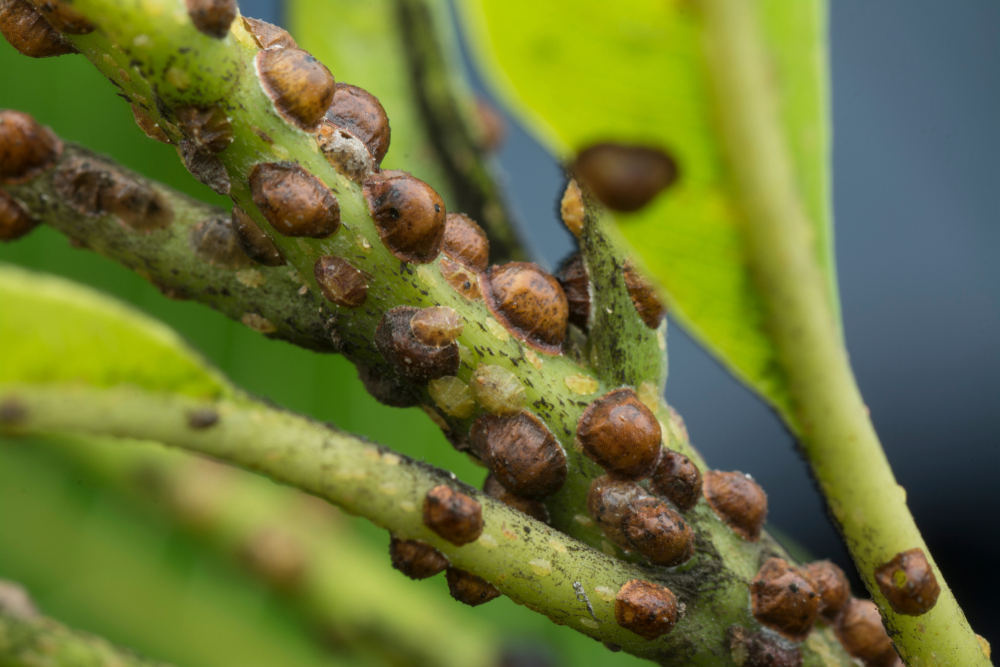
Scale and mealybugs are related sap-sucking insects. It will reveal itself as spots or dots on leaves and stems in various colors and shapes.
The presence of ants is a good indicator that you have scale. It’s a nasty pest and control needs to be taken care of as soon as it’s identified.
The best way to control it is to remove the infected parts of the plants or treat them with a targeted pesticide specifically for the control of scale.
Leaf spot
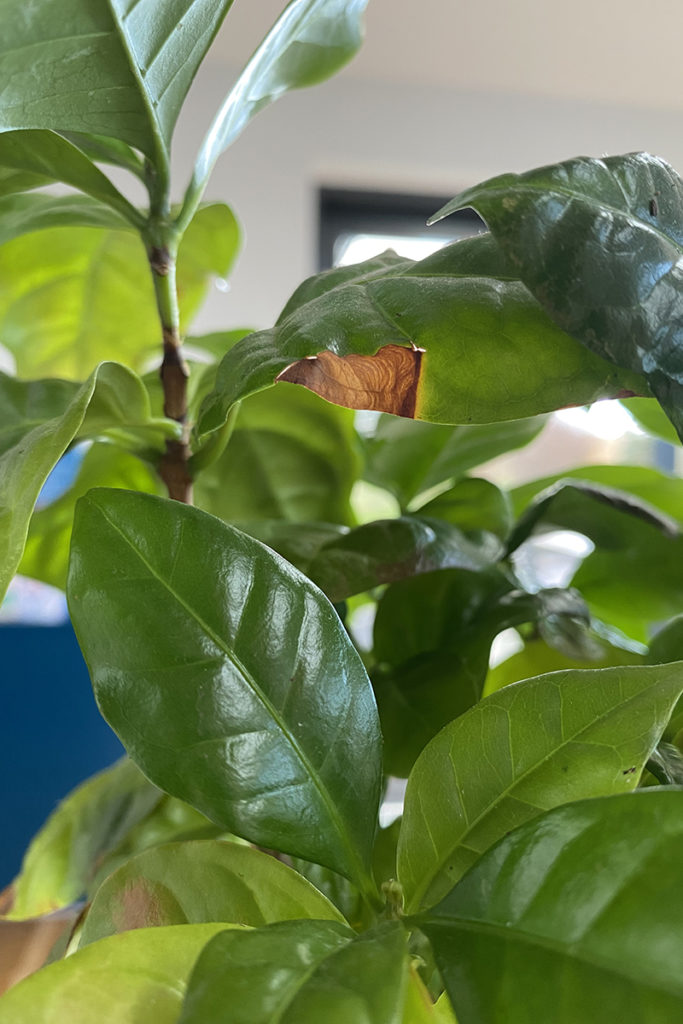
Brown spots on leaves can be many things, but more often than not, it’s a fungal disease.
The reason for this is often crowding of the leaves with little or no airflow, meaning pruning is required. Remove any leaves and stems that are infected immediately and trim back the plant.
Aphids
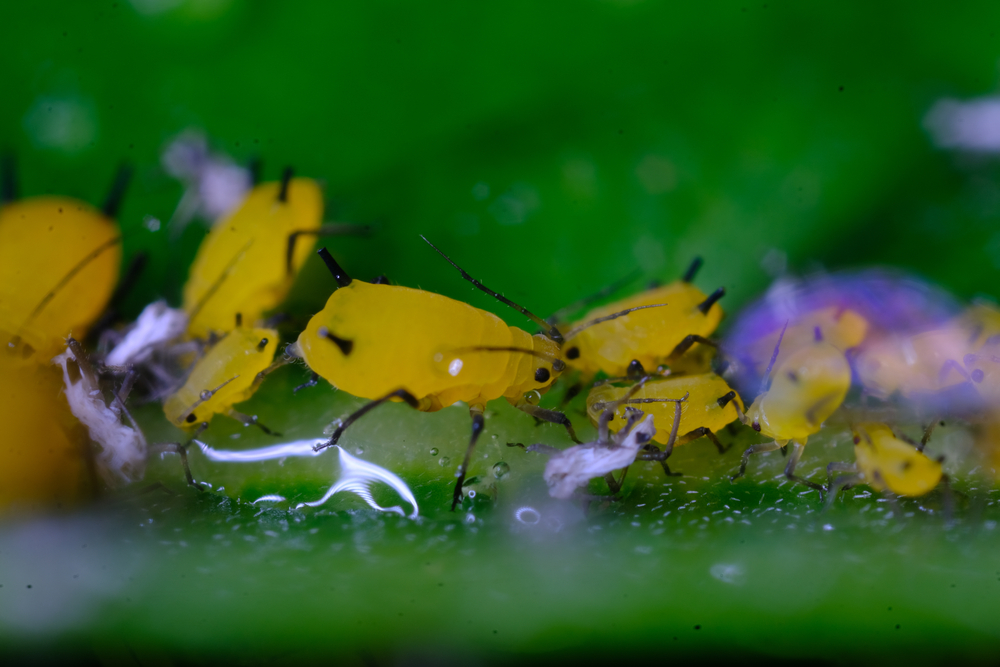
One of the most common and easily identifiable insect pests is aphids.
They attack new growth tips of plants and are usually found in large colonies, particularly during early spring and into the summer. They suck the sap from plants and cause malformed flowers and foliage.
Try and remove them with soapy water. Alternatively, they are usually easy to control with insecticides registered for use on these pests.
If you keep your coffee plant outdoors, consider releasing ladybugs to control aphids.
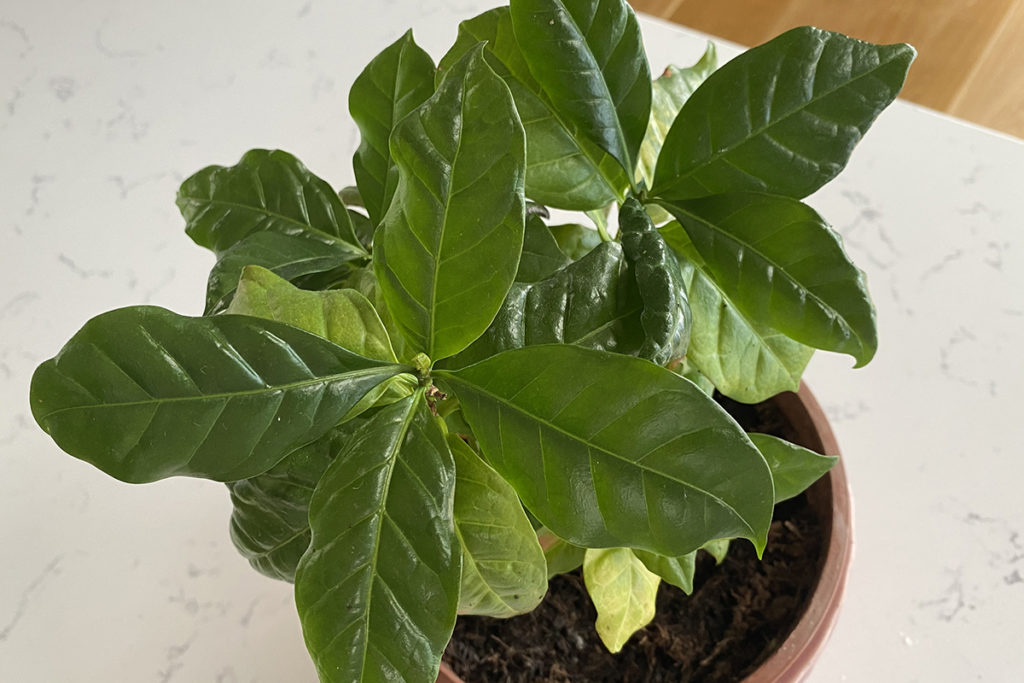
With a little effort, you can grow a coffee plant indoors to bring a pop of green to your home. The lush, glossy foliage will add a touch of the tropics no matter where you decide to display it.
If you’d like to add a coffee plant to your houseplant collection, you can order a beautiful little plant with stylish choice of pot from The Sill here.
Related Reading:
5 Reasons You Should NEVER Use Coffee Grounds In Your Garden
28 Uses For Spent Coffee Grounds You’ll Actually Want To Try
15 Rare & Unusual Houseplants To Add To Your Collection
9 Underrated Houseplants That Deserve A Spot On Your Shelf

Get the famous Rural Sprout newsletter delivered to your inbox.
Join the 50,000+ gardeners who get timely gardening tutorials, tips and tasks delivered direct to their inbox.

